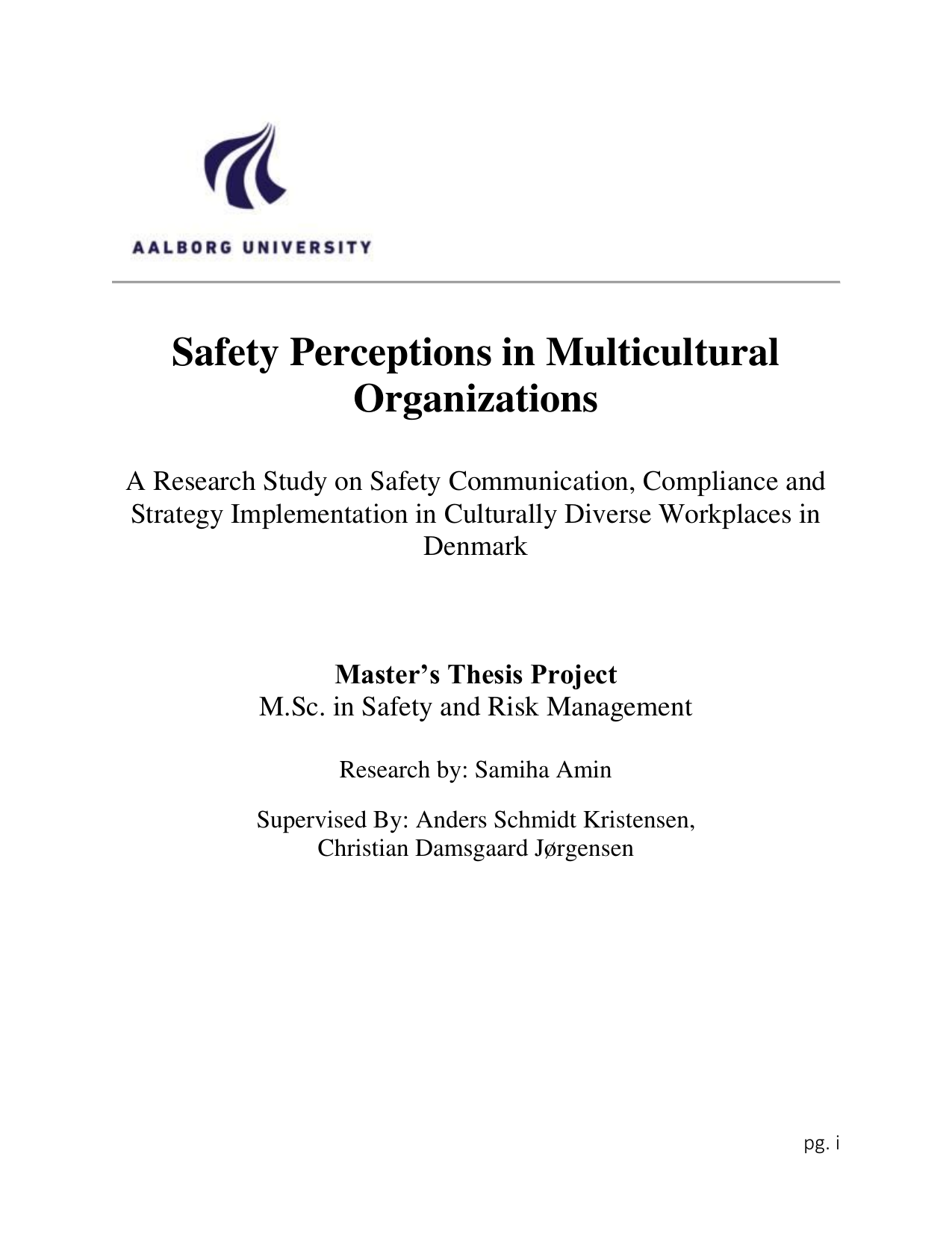
Safety Perceptions in Multicultural Organizations: A Research Study on Safety Communication, Compliance and Strategy Implementation in Culturally Diverse Workplaces in Denmark
Translated title
Safety Perceptions in Multicultural Organizations
Author
Term
4. term
Education
Publication year
2025
Submitted on
2025-05-31
Pages
61
Abstract
As a part of the increasing cultural diversity in the international labor market, the research study examines how employees with different cultural backgrounds are related to safety perceptions and behaviors in a multicultural organization in Denmark. The study contributes to connecting the gap between literature by exploring the intersections of occupational safety and multiculturalism with a particular emphasis on how migrant and culturally diverse employees perceive, interpret and negotiate workplace risks. A standardized survey was distributed among employees across a range of positions in Danish multiethnic workplaces. Statistical analysis by means of chi-square tests and descriptive analysis was used for quantitative information, and multiple-response answers were analyzed in order to measure a complex challenge of safety communication. Additional risk assessment techniques, i.e. a 5×5 risk matrix and Failure Mode and Effects Analysis (FMEA), were employed to rank safety perception hazards, and formulate strategic recommendations. The main results reveal that language barriers, time and workload constraints, and a reluctance to speak up are important barriers to effective safety communication among workers in a multicultural setting. Although research showed workers’ confidence to report safety matters, but cultural values, communication methods and psychological safety problems remain. The study also reveals that a generic approach to safety will be inadequate, considering rather a contextual approach which include multilingual communication, culturally relevant training and leadership involvement in building a shared safety culture. The paper proceeds the larger conversation about industrial safety by providing empirical input for the development of adaptive, culturally relevant safety policies. The research highlights the need to view cultural diversity, not as a barrier but as a fact that needs to be thoughtfully considered in the safety management domain.
Keywords
Documents
